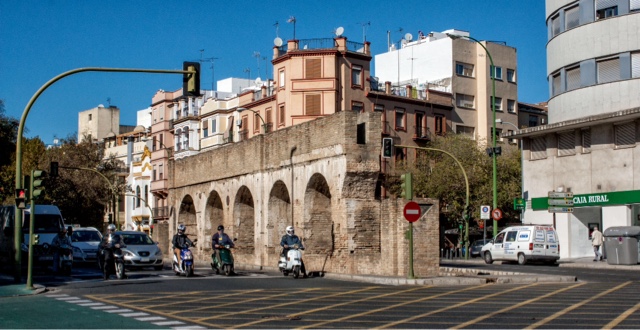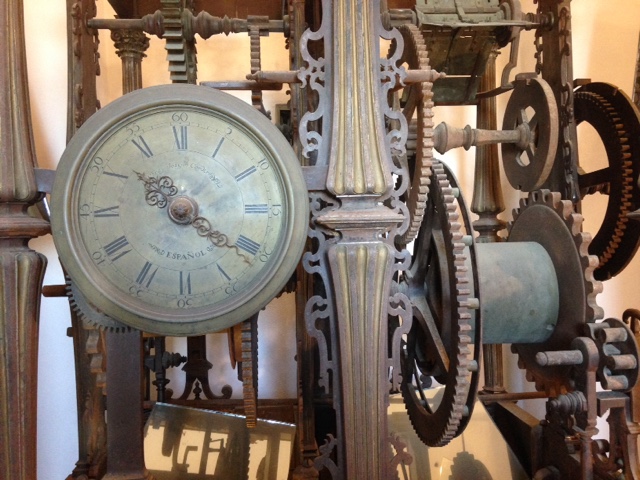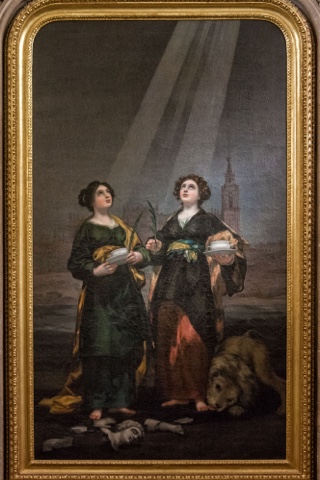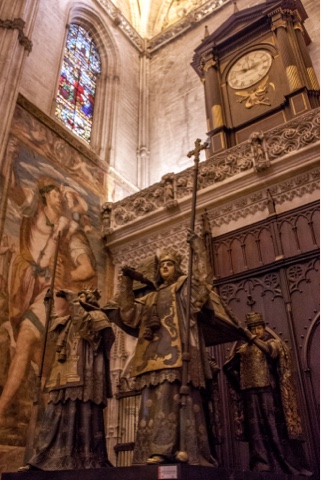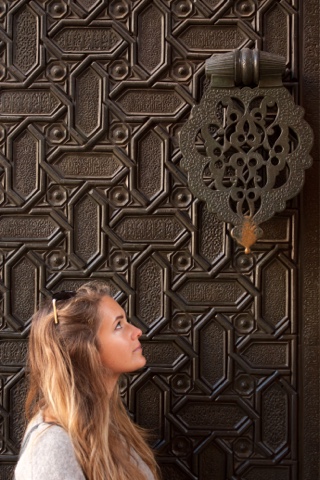Seville, Spain (Sevilla, España)
November 2015
Our main goal of day two in Seville was to see the monumental Real Alcázar – royal palace. The majority of the palace was constructed in the 13th-century by Moorish kings. As the Spanish royal family reside here for part of the year, it the oldest palace in Europe that is still in use as a royal palace.
On the way, we clutched our jackets around ourselves in the early morning chill (it was before noon, for heaven’s sake).

Once inside, we were immediately struck by the awe-inspiring architecture and decoration. Every single inch was covered in stone and plaster carvings, painted tiles or tapestries. Having entered the royal quarters (Alcoba Real), I stared up in the Salón del Techo de Felipe II and turned in circles trying to take every little detail in with my hopelessly inadequate eyes. Such precision! Such opulence!

Not all tiles were of the geometric variety – some were incredibly well-painted fragments of a much larger wall mosaic.

Under the Maiden’s Patio (Patio de las Doncellas), excavations uncovered evidence that a pool with gardens used to be present here. At the time, the whole patio had been covered over in marble tiles since the 16th-century, so they undertook work to restore the space to former glory. Shortly after reinstating the garden and reflecting pool, however, Ridley Scott requested it be tiled over again temporarily as part of the set for the 2005 film Kingdom of Heaven. Over ten years later, the garden is in full swing.
At one of the alcazar’s highest points stands a tiny figure of the Roman god Mercury, gazing out over a pool, with a “gallery of the grotesque” behind (grotto-like decoration). He and many other elements around the pool were gilded in their heyday, but now only the bronze remains. Underneath the calm water’s surface, a stampede of catfish surged toward their afternoon meal that was being scattered about by a staff member.
Trailing down from Mercury’s pool, we performed a cursory sweep of the gardens, but found that we were more impressed with the stunning architecture indoors than of a load of plants. No offence to plants. They are wonderous, too.

We did pause in the gardens for a quick rest, and took in the ornate blue ceramic tiles, which seem to be immensely popular in Seville (tiles in general are popular here, but the blue ones are special).
Leaving the palace, our minds enriched, we sought to nourish our tastebuds.
Our AirBNB host recommended Bolas, which literally translates to balls (…of ice cream). When we first entered, the shop was deserted, yet we were swiftly joined by a girl in an apron appearing from the back room with a ta-da! flourish. She was fluent in English and explained many flavours to us, giving us little sample spoons so we could partake of the various tastes. Being accustomed to Italian gelato and not Spanish ice cream, we thought that three scoops would be an acceptable amount and picked an array of flavours including fig cream, caramel chocolate and lemon cinnamon. Less than halfway through we knew we had made a mistake and might not be able to finish our delectable pots of goodness for they were much denser in texture than gelato.
At one point, the sprightly server bounded over to extend to us two spoonfuls of the hot-off-the-press pistachio ice cream, which she thought tasted better when just made because of how the sugars behaved. Though we didn’t (and indeed, could not) finish our pottles, it was a great experience and we knew we would be back for mid-afternoon pick-me-ups again.
That evening we stocked up on oranges and purchased a cava to go with our dinner of sandwiches. In the little Carrefour I found a mini trolley, which I propelled through the aisles in fits of happiness – it was so light and manoeuvrable! I wanted to take her for my own and call her Bindy. Alas, at the end of the shopping trip we were forced to say our tearful farewells.
Today’s post was almost called: Meet My Tiny Naranja Perambulator





